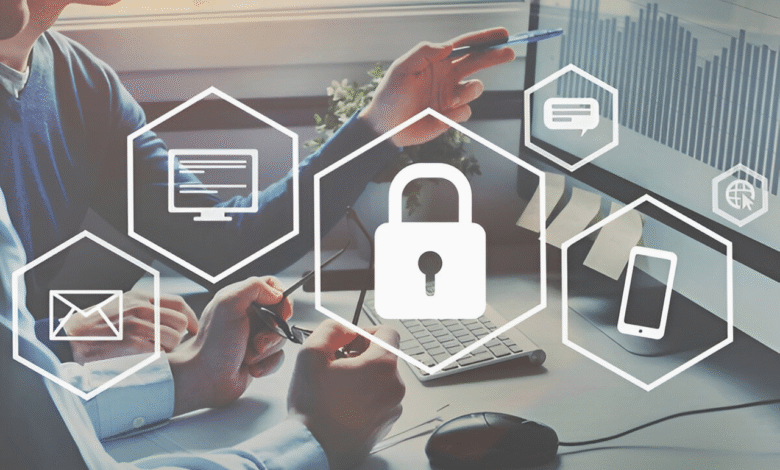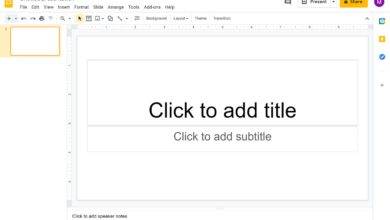How to Enable End-to-End Encryption on Your Messaging Apps
End-to-end encryption keeps your chats private. Learn how to enable secure messaging on WhatsApp & iMessage with our step-by-step guide.

End-to-end encryption (E2EE) is the gold standard for secure digital communication, ensuring only you and your intended recipient can read your messages. In an era where data breaches and privacy invasions are rampant, enabling end-to-end encryption on your messaging apps is no longer optional it’s essential. This powerful security feature prevents hackers, governments, and even the app providers themselves from accessing your private conversations, giving you complete control over your digital privacy.
While some apps like Signal and WhatsApp enable end-to-end encryption by default, others require manual activation. Whether you’re discussing sensitive business matters, sharing personal information, or simply valuing your privacy, understanding how to enable this feature across different platforms is crucial. This guide will walk you through the steps to activate E2EE on popular messaging apps, along with best practices to maximize your security and keep your communications truly private.
How to Enable End-to-End Encryption on Your Messaging Apps
What Is End-to-End Encryption?
End-to-end encryption is a security measure that ensures only the sender and receiver can access the content of a message. Unlike standard encryption, where data is decrypted on a server, E2EE means that messages are encrypted on the sender’s device and only decrypted on the recipient’s device. This prevents third parties, including the app provider, from accessing your conversations. This technology is essential for protecting sensitive information, such as financial details, personal conversations, and business communications. Apps like Signal and WhatsApp use end-to-end encryption to safeguard user privacy, while others, like Telegram, require users to enable it manually in secret chats.
Why Is End-to-End Encryption Important?
Cybercriminals and surveillance agencies constantly seek ways to intercept private communications. Without end-to-end encryption, your messages could be exposed in data breaches or government surveillance programs. Even tech companies themselves may access your data for advertising or analytics purposes. By using E2EE, you ensure that your conversations remain confidential. This is especially crucial for journalists, activists, and businesses handling sensitive data. Additionally, with growing concerns over data privacy laws, enabling encryption helps you stay compliant with regulations like GDPR and HIPAA.
How to Enable End-to-End Encryption on WhatsApp
To enable end-to-end encryption on WhatsApp, simply start chatting – it’s enabled by default for all personal messages, ensuring only you and the recipient can read them. For added security, verify encryption by opening a chat, tapping the contact’s name, and checking the Encryption tab to view the unique security code (you can compare this code with your contact in person for extra verification). To further protect your account, enable two-step verification in Settings > Account > Two-step verification, which adds a PIN requirement when registering your number on new devices.
How to Enable End-to-End Encryption on Signal
Signal automatically enables end-to-end encryption for all messages, calls, and video chats by default – no setup required. For enhanced security, you can enable additional protections like disappearing messages (tap the contact’s name > Disappearing Messages) or verify encryption keys (tap the contact’s name > View Safety Number) to confirm no third-party is intercepting your conversations. All Signal communications – including group chats and file transfers – are secured with industry-leading encryption protocols, and the app’s open-source nature allows independent verification of its security claims.
How to Enable End-to-End Encryption on Telegram
To enable end-to-end encryption on Telegram, you must specifically start a Secret Chat (tap a contact’s name > “Start Secret Chat”), as regular Telegram chats only use server-client encryption. These encrypted conversations feature self-destruct timers, prevent forwarding/screenshots (on iOS), and won’t sync across devices – they’re only accessible on the device where they were created. Note that group chats, channels, and cloud-stored messages don’t support end-to-end encryption, so for maximum security, always verify you’re using the Secret Chat function marked with a lock icon.
How to Enable End-to-End Encryption on iMessage
iMessage automatically uses end-to-end encryption when messaging between Apple devices (shown by blue message bubbles), requiring no manual setup. To ensure maximum security, verify both sender and recipient have iMessage activated (Settings > Messages), enable two-factor authentication for your Apple ID (Settings > [Your Name] > Password & Security), and beware that messages sent to non-Apple users (green bubbles) revert to unencrypted SMS. For sensitive conversations, you can manually verify encryption by tapping the contact’s name and checking the “Verify” option to compare security codes.
Best Practices for Secure Messaging
Enable Disappearing Messages
Reduce your digital footprint by activating auto-delete features in supported apps. Set messages to disappear after 24 hours or a custom timeframe, ensuring sensitive content isn’t stored indefinitely. This is particularly crucial for Business communication or sharing confidential data.
Always Verify Encryption Status
Not all chats are equally secure. Before sharing sensitive information, confirm your conversation is end-to-end encrypted by checking the app’s security settings. Look for visual indicators like lock icons or encryption badges, and periodically verify security codes with contacts to prevent man-in-the-middle attacks.
Use Screen Security Features
Prevent message previews from appearing in notifications by enabling screen security options. Most secure apps offer settings to hide message content from lock screens and recent apps menus. Combine this with device-level security like biometric locks for comprehensive protection.
Be Wary of Cloud Backups
While convenient, cloud backups often bypass end-to-end encryption. Disable automatic backups for sensitive conversations, or use apps that offer encrypted backup options. Remember that restoring from backup could expose previously deleted messages.
Regularly Update Your Apps
Security patches fix vulnerabilities that could compromise encryption. Enable automatic updates for your messaging apps and operating system to ensure you always have the latest protections against emerging threats.
Avoid Public Wi-Fi for Sensitive Chats
Public networks are hunting grounds for hackers. Use a VPN when messaging on untrusted networks, or wait until you’re on a secure connection for important conversations. Some apps like Signal even warn you when your connection changes unexpectedly.
Secure Your Linked Devices
Multi-device syncing can create security weak points. Regularly review and remove old linked devices, and enable companion device authentication where available. Be especially cautious with web/desktop versions of messaging apps.
Practice Contact Verification
Take advantage of safety number or fingerprint verification features. Periodically confirm these unique identifiers with contacts through a secondary secure channel to ensure no one has intercepted your communications.
Read More: How to Use a VPN on All Devices with One Subscription
Conclusion
End-to-end encryption is your strongest defense against prying eyes in today’s digital landscape. By enabling this feature across your messaging apps, you’re taking a crucial step toward protecting your private conversations from hackers, surveillance, and unauthorized access. Whether you use WhatsApp, Signal, Telegram, or iMessage, activating E2EE ensures that only you and your intended recipients can read your messages – not even the service providers themselves can decrypt your communications.
However, remember that end-to-end encryption is just one piece of the privacy puzzle. To maximize your security, combine it with strong passwords, two-factor authentication, and regular software updates. As technology evolves and new threats emerge, staying informed about security best practices will help you maintain ironclad protection for your digital conversations. Start implementing these measures today to enjoy truly private messaging and peace of mind in an increasingly connected world.
FAQs
Which messaging apps have end-to-end encryption by default?
Apps like Signal and WhatsApp enable end-to-end encryption (E2EE) automatically, while others like Telegram require manual activation in Secret Chats.
Can end-to-end encrypted messages be hacked?
While E2EE is extremely secure, hackers may exploit device vulnerabilities always keep your apps and OS updated for maximum protection.
Does end-to-end encryption work for group chats?
Yes, apps like Signal and WhatsApp extend E2EE to group messages, ensuring all participants’ conversations remain private.
Are SMS or regular texts end-to-end encrypted?
No, traditional SMS messages lack encryption use iMessage or other E2EE apps for secure texting.
Can companies or governments bypass end-to-end encryption?
Legally, most cannot, but some governments pressure tech firms for backdoor access open-source apps like Signal offer stronger resistance.











